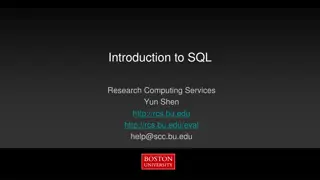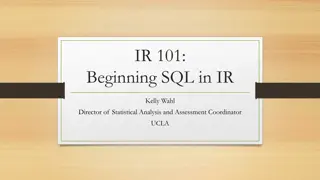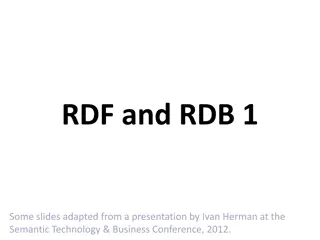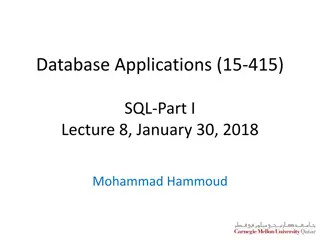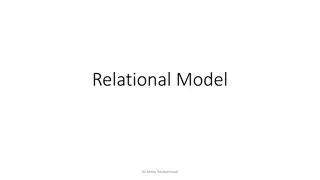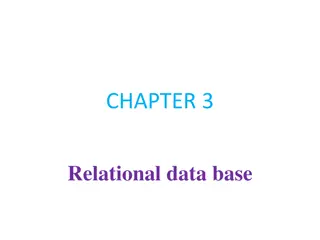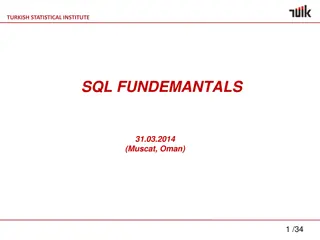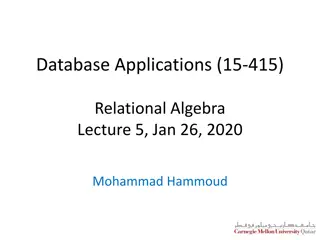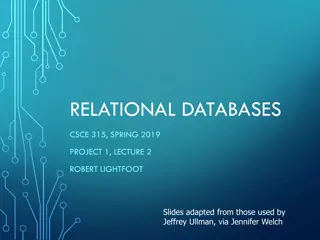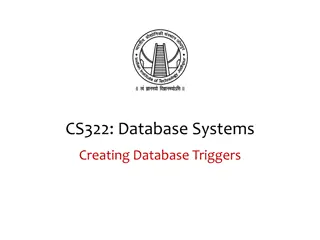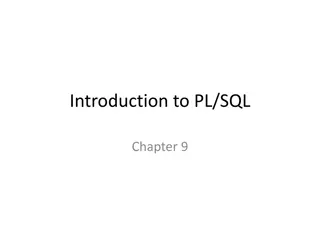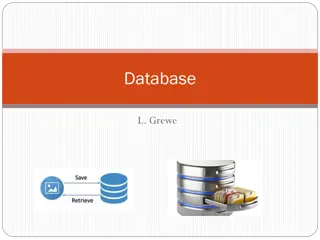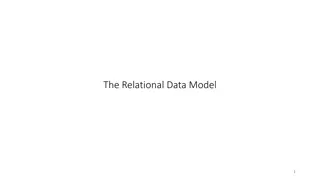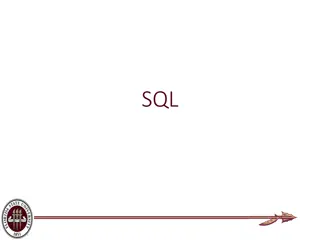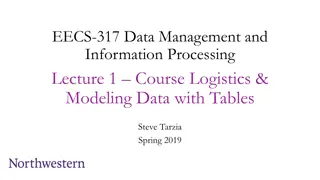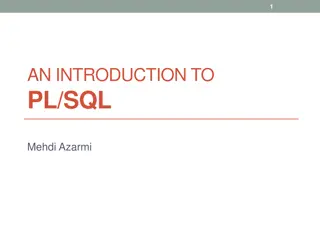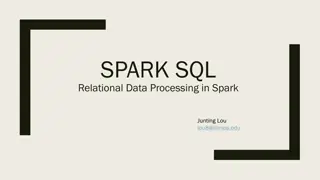Understanding SQL Triggers in Relational Databases
SQL triggers are stored procedures that are automatically invoked when certain events occur in a database, such as insertions or updates to tables. This article explains the definition of triggers, their syntax, types, and examples of DML triggers in SQL servers. It also covers the concept of row-level triggers and differentiates between AFTER and INSTEAD OF triggers.
Download Presentation

Please find below an Image/Link to download the presentation.
The content on the website is provided AS IS for your information and personal use only. It may not be sold, licensed, or shared on other websites without obtaining consent from the author. Download presentation by click this link. If you encounter any issues during the download, it is possible that the publisher has removed the file from their server.
E N D
Presentation Transcript
Working with sql Triggers RDBMS BCA 2nd year
Defination of triggers Trigger: A trigger is a stored procedure in database whichautomatically invokes whenever a special event in the database occurs. For example, a trigger can be invoked when a row is inserted into a specified table or when certain table columns are being updated. Syntax: create trigger [trigger_name] [before | after] {insert | update | delete} on [table_name] [for each row] [trigger_body]
Explanation of syntax: 1. create trigger [trigger_name]: Creates or replaces an existing trigger with the trigger_name. 2. [before | after]: This specifies when the trigger will be executed. 3. {insert | update | delete}: This specifies the DML operation. 4. on [table_name]: This specifies the name of the table associated with the trigger.
Explanation of syntax: 6. [for each row]: This specifies a row-level trigger, i.e., the trigger will be executed for each row being affected. 7. [trigger_body]: This provides the operation to be performed as trigger is fired
What is Trigger? Trigger is a Special kind of Stored Procedure or an operation that gets executed automatically when an event occurs in the database.
Types of Triggers Types of Triggers Following are different types of triggers in Sql Server: 1. Data Manipulation Language (DML) Triggers:DML triggers are executed when a DML operation like INSERT, UPDATE OR DELETE is fired on a Table or View.DML Triggers are of the following two types: Two types of triggers After Instead of triggers triggers
Types of DML Explanation 1.AFTER Triggers are executed after the DML statement completes but before it is committed to the database. AFTER Triggers if required can rollback it s actions and source DML statement which invoked it. 2. INSTEAD OF Triggers are the triggers which gets executed automatically in place of triggering DML (i.e. INSERT, UPDATE and DELETE) action. It means if we are inserting a record and we have a INSTEAD OF trigger for INSERT then instead of INSERT whatever action is defined in the trigger that gets executed.
Types of triggers Types of triggers 2. Data Definition Language (DDL) Triggers DDL Triggers are executed when a DDL Statements like CREATE, ALTER, DROP, GRANT, DENY, REVOKE, and UPDATE STATISTICS statements are executed. Certain system stored procedures that perform DDL like operations can also fire DDL triggers.
Types of triggers 3.LOGON Triggers Logon Triggers gets executed automatically in response to a LOGON event. They get executed only after the successful authentication but before the user session is established. If authentication fails the logon triggers will not be fired.
Types of triggers 4. CLR Triggers CLR Triggers are based on the Sql CLR. We can write DML and DDL triggers by using the Supported .NET CLR languages like C#, VB.NET etc. CLR triggers will useful if require heavy computation in the trigger or require reference to object outside SQL.
BEFORE and AFTER of Trigger: BEFORE and AFTER of Trigger: BEFORE triggers run the trigger action before the triggering statement is run. AFTER triggers run the trigger action after the triggering statement is run.
Before and After Trigger example Before and After Trigger example Example: Given Student Report Database, in which student marks assessment is recorded. In such schema, create a trigger so that the total and average of specified marks is automatically inserted whenever a record is insert. Here, as trigger will invoke before record is inserted so, BEFORE Tag can be used. Continue on next slide......
Example continue Suppose the database Schema : mysql> desc Student;
Example continue.. SQL Trigger to problem statement. create trigger stud_marks before INSERT on Student for each row set Student.total = Student.subj1 + Student.subj2 + Student.subj3, Student.per = Student.total * 60 / 100;
Example continue... Above SQL statement will create a trigger in the student database in which whenever subjects marks are entered, before inserting this data into the database, trigger will compute those two values and insert with the entered values. i.e., mysql> insert into Student values(0, "ABCDE", 20, 20, 20, 0, 0); In this way trigger can be creates and executed in the databases.
Dropping triggers To drop a trigger on DATABASE in another user's schema, you must also have the ADMINISTER DATABASE TRIGGER system privilege(advantage). Syntax drop_trigger::=
schema: Specify the schema containing the trigger. If you omit schema, then Oracle Database assumes the trigger is in your own schema. trigger: Specify the name of the trigger to be dropped. Oracle Database removes it from the database and does not fire it again.



